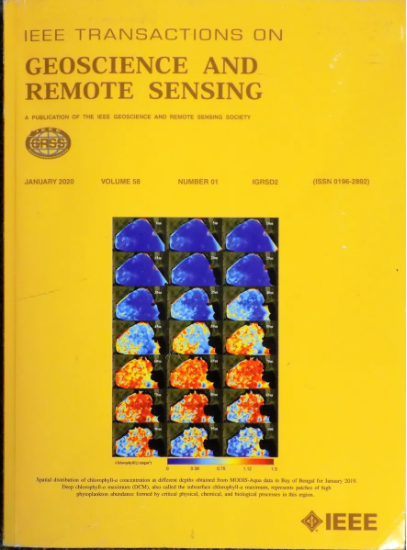利用先验物理速度场深度学习反演复杂地下根系的地面穿透雷达
IF 8.6
1区 地球科学
Q1 ENGINEERING, ELECTRICAL & ELECTRONIC
IEEE Transactions on Geoscience and Remote Sensing
Pub Date : 2025-03-21
DOI:10.1109/TGRS.2025.3553688
引用次数: 0
摘要
探地雷达数据反演有助于研究地下介质分布,特别是根系及其环境。新兴的探地雷达反演模型侧重于建立从雷达波b扫描图像到介电常数分布的直接映射。它们不仅依赖于数据集的多样性,而且很难确定电磁波传播特性的影响。这些都给精确还原复杂的地下场景带来了困难。针对上述问题,本文提出了一种基于嵌入速度场的雷达波反演模型(velocity field inversion UNet, VFIUNet),利用探测域中估计的全球速度信息,从b扫描数据中重建地下介电常数分布。首先,通过自聚焦FK偏移估计雷达波在探测域中的传播速度;然后,设计了基于多尺度变换模块(MSTM)的嵌入式物理速度场反演模型,将先验速度场与采集的b扫描数据相结合,估算出介电常数分布的差异;最后,利用混合损失函数[包括L2和结构相似指数度量(SSIM)]和根景雷达波数据集对VFIUNet的参数进行优化。与现有反演模型的对比研究表明,基于先验速度信息的反演模型在介电常数分布重建方面具有更好的性能。数值实验预测和原位根探测结果表明,该反演模型能较好地恢复地下介质的介电常数、形状和位置。准确的探地雷达反演有助于地下根景的三维重建。本文章由计算机程序翻译,如有差异,请以英文原文为准。
Deep Learning Inversion of Ground-Penetrating Radar With Prior Physical Velocity Field for Complex Subsurface Root System
The inversion of ground-penetrating radar (GPR) data is beneficial for studying the subsurface media distribution, especially for the root system and their environment. Emerging GPR inversion models focus on constructing a direct mapping from radar wave B-Scan image to permittivity distribution. They not only rely on the diversity of the dataset, but also are hard to specify the effects of electromagnetic wave propagation properties. These make it difficult to accurately recover complex underground scenes. Addressing the above issues, this article proposes a radar wave inversion model based on the embedded velocity field (velocity field inversion UNet, VFIUNet), which utilizes the estimated global velocity information within the detection domain to reconstruct the subsurface permittivity distribution from B-Scan data. First, the propagation velocity of radar wave in the detection domain is estimated through self-focusing FK migration. Then, an embedded physical velocity field inversion model based on the multiscale transformation module (MSTM) was designed, which integrates the prior velocity field and the collected B-Scan data to estimate the difference in permittivity distribution. Finally, the parameters of the VFIUNet are optimized with the hybrid loss function [including L2 and structural similarity index measure (SSIM)] and the root scene radar wave dataset. Comparative studies with existing inversion models exhibit that inversion models based on a priori velocity information provide better performance in the permittivity distribution reconstruction. The predictions of numerical experiments and in situ root detection indicate that the permittivity, shapes, and positions of the subsurface media could be restored by the proposed inversion model with high accuracy. Accurate GPR inversion would facilitate the 3-D reconstruction of subsurface root scenes.
求助全文
通过发布文献求助,成功后即可免费获取论文全文。
去求助
来源期刊

IEEE Transactions on Geoscience and Remote Sensing
工程技术-地球化学与地球物理
CiteScore
11.50
自引率
28.00%
发文量
1912
审稿时长
4.0 months
期刊介绍:
IEEE Transactions on Geoscience and Remote Sensing (TGRS) is a monthly publication that focuses on the theory, concepts, and techniques of science and engineering as applied to sensing the land, oceans, atmosphere, and space; and the processing, interpretation, and dissemination of this information.
 求助内容:
求助内容: 应助结果提醒方式:
应助结果提醒方式:


